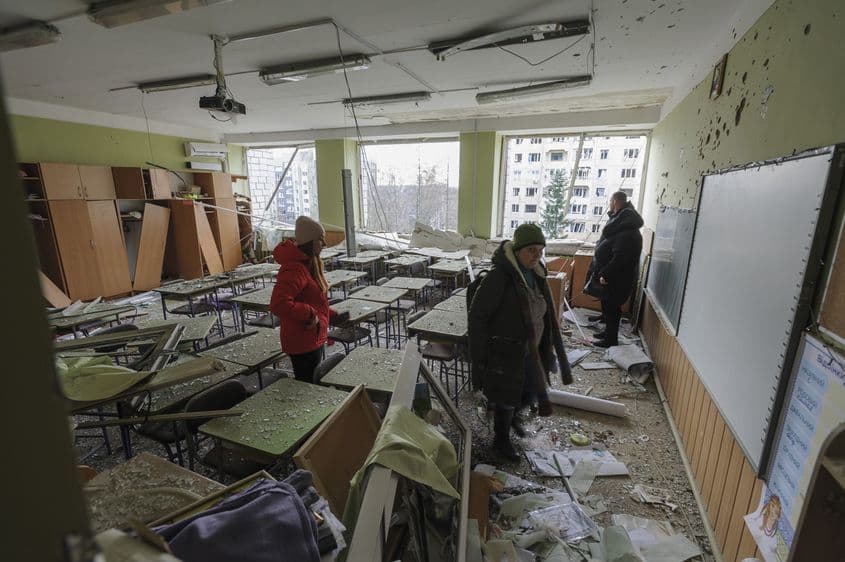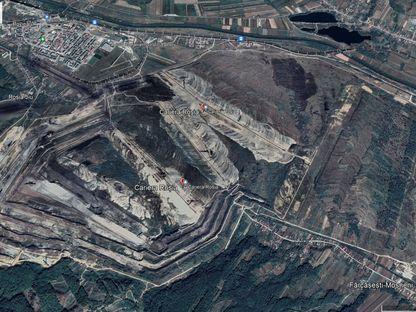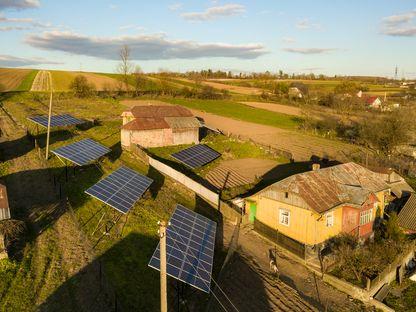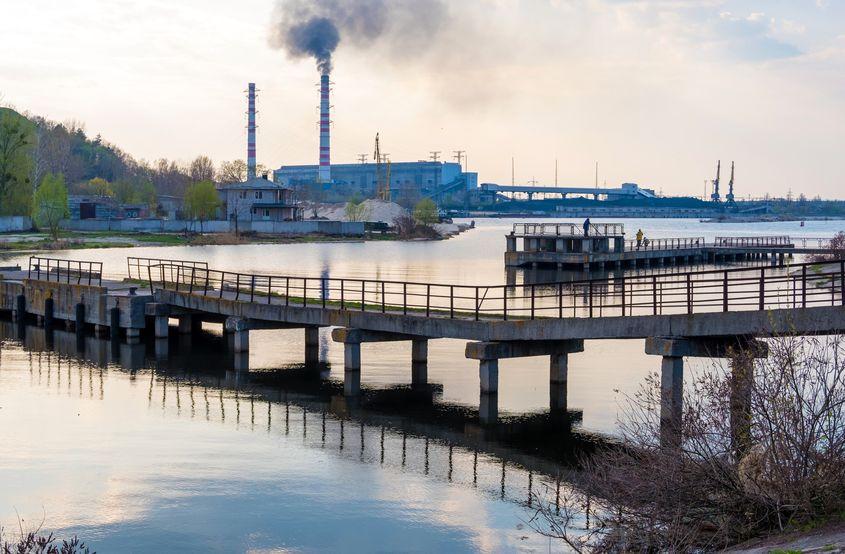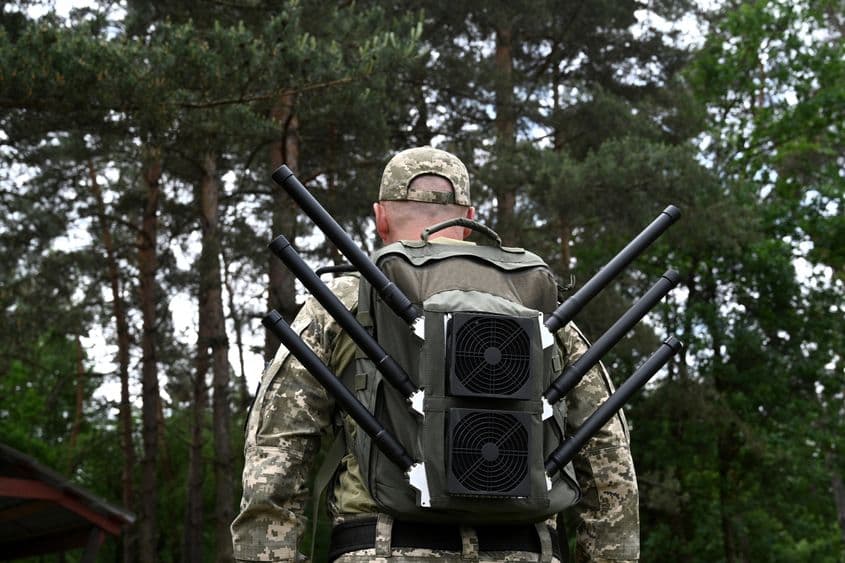„În general, se caută lovirea pe întreg lanțul: cel de producere al energiei, transportul și distribuția. În Ucraina, Rusia a lovit și termocentralele, și rețeaua de transport și transformatoarele.” Foto: 157153843 © LCVA | Dreamstime.com
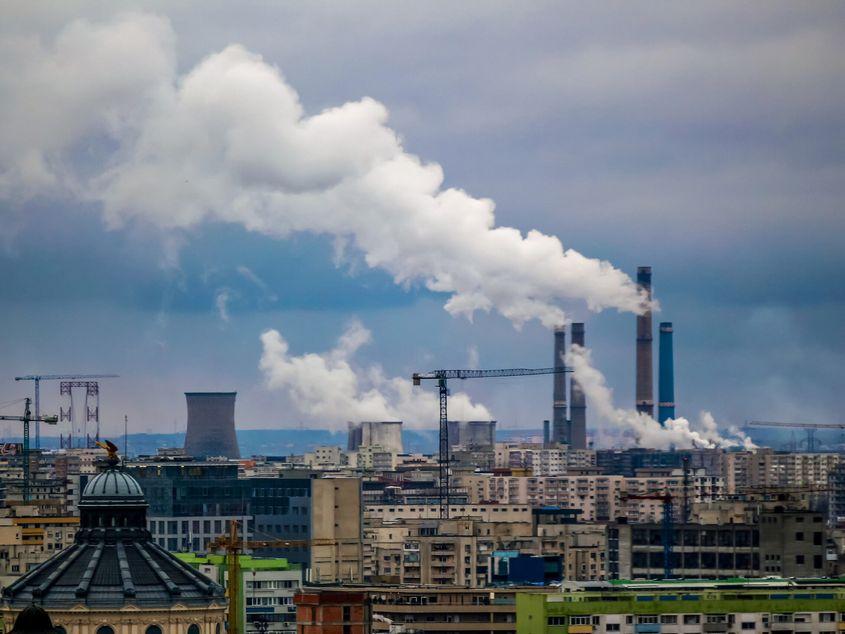
„În general, se caută lovirea pe întreg lanțul: cel de producere al energiei, transportul și distribuția. În Ucraina, Rusia a lovit și termocentralele, și rețeaua de transport și transformatoarele.” Foto: 157153843 © LCVA | Dreamstime.com
13/11/2024
The sad lesson of the Ukrainian war for Romania. How vulnerable are the country’s energy networks to Putin's new weapons of terror in Ukraine
The ominous, foreboding sound is partly drowned out by the jolting thump of anti-aircraft gunfire. Odessa's black skies are cut by a few agitated swarms of orange tracer trails, through the anaemic columns of white light from searchlights on the ground, frantically searching for the source of the annoying, flying motorbike hum.
Then, silence. Somewhere, far away, the horizon suddenly lights up. Seconds later, the muffled sound of the explosion arrives, accompanied by a mix of shattering windows, car alarms and swear words in Ukrainian.
It's another night of bombings in Odessa, a scenario that is repeated in the capital Kiev and other Ukrainian cities under constant bombardment by the Putin regime's new weapons of terror: a deadly cocktail of kamikaze drones, ballistic and cruise missiles that indiscriminately hit "military targets", apartment blocks, hospitals, but also vital power stations, water and gas networks, without which ordinary life in a city becomes impossible to imagine.
No-one can say precisely how many such attacks have taken place and how many drones and rockets have been constantly launched over Ukrainian cities. In October alone, for example, around 2,000 kamikaze drone attacks were launched on cities and targets all over Ukraine.
- We are practically talking about a new "record", 700 drones more than in September.
- By comparison, a year ago, the Russians were launching several dozen drones a day. Now we're already talking of hundreds.
- Since 1 September, Kiev has had only one night without such attacks. Ukraine's capital "accumulated" 50 hours of raid alarms in September, 80 in October and already 30 hours after just one week in November.
- After the Russians completely destroyed the Tripilska power plant, the largest in the Kiev region, Ukrainians are now bracing themselves for a harsh winter, when they expect blackouts of up to 20 hours a day.
An extremely unpleasant imagination exercise: what if...?
For almost three years, the war has turned Ukraine into a huge testing ground for the darkest and most morbid doomsday scenarios. The "resilience" of an entire society to the most diverse and perfidious types of attack is being tested on Ukrainian civilians.
Aftermath of a combined missile and drone attack in Ukraine. Photo: 301959131 © Nicktys | Dreamstime.com
Looking at what is happening now in Ukraine, it's not hard to imagine the following questions: what if Romania were to find itself in such a situation? How "resilient" are we and how exposed is our country's energy network to a handful of such attacks?
"We are very vulnerable," admits Ana Otilia Nuțu, a public policy analyst in energy and infrastructure at Expert Forum.
Mulți ne citesc, puțini ne susțin. Fără ajutorul tău, nu putem continua să scriem astfel de articole. Cu doar 5 euro pe lună ne poți ajuta mai mult decât crezi și poți face diferența chiar acum!
The energy expert points out that Romania currently relies on an electricity grid that was designed and implemented 80-90 years ago, in the 1950-1960s.
"Until 30 years ago, we had the following situation: we had a very large electricity production capacity concentrated in certain points on the map where a very large energy-intensive industry had developed. This is more visible now in municipal heating, where we see that all the thermal points in Bucharest were next to industrial platforms that have since died", says Otilia Nuțu.
So in 1989, only 5% of electricity consumption was domestic and the remaining 95% was industrial. "Now all that industry has died and consumption has moved to cities. New types of consumption are starting to appear in cities, which 30 years ago you wouldn't even have thought of: industries are going digital - you need very high electricity consumption for data centres, servers, etc.", explains the energy expert.
In other words, the majority of electricity is "household consumption", which means that a hit on the power grids will primarily affect the civilian population.
"The Five Circles Problem". How the theorists of modern warfare included a country's infrastructure as a "legitimate target"
Coal Mining Expansion Leads to Deforestation: Over 470 Hectares of Forest Cut Down in Gorj, Romania
Over the past six years, more than 470 hectares of national forest land have been allocated by the government, without compensation, to the Oltenia Energy Complex (CEO) for the expansion or opening of new coal mines.
The not-so-green Romania. The state delays settlements for photovoltaic panels by 2 years
PressOne reviews the main dysfunctions in the production, consumption and distribution of energy from renewable sources, as revealed by discussions with consumers and data provided by official sources at the request of our editorial office.
"Modern societies have always been vulnerable when it comes to energy. You have a network of electricity, gas or oil pipelines - all these things attract the military," military analyst and expert Sandu-Valentin Mateiu tells PressOne.
In military aviation there is already the so-called theory of the "five circles" which an air force must attack to "paralyze the enemy". The five circles are: the country's leadership, industry, infrastructure, the civilian population and the army itself.
"Circles" 3 (infrastructure) and 4 (civilian population) are precisely those now directly targeted by Russia with its brutal attacks on Ukraine's infrastructure and civilian population.
Un newsletter pentru cititori curioși și inteligenți.
Sunt curios
"In general, they are looking to hit the whole chain: energy production, transport and distribution. In Ukraine, Russia has hit power stations, the transmission network and transformers," says military expert Sandu-Valentin Mateiu.
In addition, if you have a single source of energy concentrated in one place (as is the case, for example, with Romania's Cernavodă nuclear power plant), it represents an additional vulnerability.
"For example, at Cernavodă we have reactors 1 and 2 which provide about 20% of Romania’s current production. If we add reactors 3 and 4, that would be 40%. This 40% depends on a single place on the map and a single line", warns Otilia Nuțu.
A year ago, unit 1 of the Cernavodă power plant automatically switched off, due to storms that caused "disturbances in the national energy system". "It doesn't even have to be a war, it could be a terrorist attack. It's good not to have 40 per cent of an energy source concentrated in one place or to be dependent on one (power transmission) line," says Nuțu.
Also, the same reactor 1 at Cernavodă also "accidentally" switched off in the middle of the summer this year, at the height of peak consumption.
"There are also climate change issues," explains the energy expert.
"Reactors have to be cooled with water from the Danube. If the Danube level drops below a certain threshold, you have to shut down a reactor. Similarly, if you have prolonged droughts, hydropower problems start to appear, you have to design a system that can manage these millions of factors and millions of possible sources, smaller or larger on the map, and, at the same time, somehow work very quickly in the event of a risk at a given point", says Otilia Nuțu from Expert Forum. The aim is to create a new wind industry - „offshore wind” - in the Black Sea area. "That energy has to be transported offshore. It will be a network of energy highways. Both require much more capable grids than what we have today. Our grids were designed for the 60's, now you have to integrate some variable resources. Then all sorts of threats arise, we see what happens in the event of war", warns Otilia Nuțu.
Trypilska TPP was an 1800 MW thermal power plant located on the Dnieper River, 40 km from Kiev. Photo: 146569753 © Kateryna Levchenko | Dreamstime.com
Returning to Ukraine, we see the devastating effects of the destruction of one single power plant, such as the Tripilska plant near Kiev: Ukraine lost 80% of its energy production capacity and would take at least 18 months to rebuild its infrastructure.
"The most efficient way is to hit the power generators, the power stations and the power buses. In every country you have the power generation and the power station where the voltage is raised in the high-voltage lines, the basic idea is to hit the power station and the substations," explains Sandu-Valentin Mateiu.
Then, "they hit the power lines and step-down transformer stations (which "lower" the voltage) in each city," the military analyst also points out with regard to the tactics used by the Russians in Ukraine. "You hit the backbone, the main nodes of the network".
An example: thermal power stations near major cities, such as the Tripilska thermal power plant near Kiev. Tripilska produced 20% of Ukraine's electricity needs before it was destroyed.
"Apart from hitting blocks of flats, Russia aimed to destroy thermal and electrical power plants precisely in order to demoralise the population, through direct actions on energy terminals - power plants and final transformer stations to residential neighbourhoods", says Sandu-Valentin Mateiu.
What risks Romanian authorities have identified for the national energy infrastructure
It is true that, at the same time, coal-fired power stations have an increasingly lower contribution to Romania’s energy map.
"Hydropower is currently the main source of renewable energy, covering approx. 34% of Romania's final electricity consumption", according to the document "Romania's Energy Strategy 2025-2030, with a 2050 perspective", published by the Ministry of Energy.
The document identifies nine elements of critical energy infrastructure. It also mentions the main risks related to Romania's hydropower plants:
"As a large proportion of hydropower plants were built between 1960-1990, urgent investments are needed to increase efficiency." Thus, to ensure energy security, Romania "must urgently expand the exploitation of its primary energy resources, including nuclear and fossil fuels", according to the strategy.
This means, as expert Otilia Nuțu pointed out, the use of a type of (nuclear) energy concentrated in one place: Cernavodă. What's more, Romania's former big thermal power stations - such as Rovinari and Paroseni - run on coal.
"In the context of geopolitical tensions and the risk of an escalation of the conflict between the Russian Federation and Ukraine, Romania needs to be prepared for possible disruptions in energy supply. Domestic conventional resources can help create a buffer against external shocks and ensure the continuity of energy supply in such situations," according to the development ministry.
The analysis does not say exactly how much Romania can cope with "external shocks" and for how long "continuity of supply" can be ensured.
"In the context of Russia's war of aggression in Ukraine, various attacks, conventional or hybrid, have been likely to disable all or part of the power system of Ukraine and/or neighbouring states. One or more similar attacks also constitute risks for Romania's energy security, which is why it is necessary to create a back-up source for electricity production".
In other words, we don't have such back-up sources at the moment.
The 'Circle 3' infrastructure problem: many targets to defend, few air defences
Also from the experience of the Russian-Ukrainian war, we can see how exposed fuel depots are to drone strikes - infinitely cheaper than cruise missiles and much harder to detect. Moreover, as we can see, even Russia does not have a 100% air defence capability for its entire territory.
In terms of anti-aircraft defence, Romania currently has only two modern, long-range Patriot systems operational. These are designed to intercept ballistic or cruise missiles.
Russia currently produces between 132-171 missiles a month and can afford to launch 2,000 drones a month over Ukraine.
But the Patriot is completely inadequate for drone combat. To intercept drones, you need to have complementary anti-aircraft systems to the Patriot (medium-range, short-range and very short-range - including high-performance anti-aircraft guns or machine guns equipped with radar-guided smart missiles - where there are currently only "memoranda of intent" to purchase such systems).
The good news is that Romania has, "by default", a varied energy mix (hydroelectric power stations, thermal power stations, nuclear power stations, etc.) but it is based - and here comes the bad news - on a network that is largely extremely old and rudimentary, and which will take many years and a lot of money to modernise. Not to mention the billions of euros that will have to be spent separately on modernising the country's anti-aircraft systems.
This text is part of a series of articles on TEFI, a cross-border editorial project developed by some of the most powerful newsrooms in Central and Eastern Europe: Gazeta Wyborcza (Poland), Magyar Jeti / 444 (Hungary), SME (Slovakia), Bellingcat (Netherlands), PressOne (Romania), united in a consortium financed by European funds and aiming to promote national and regional security issues.

Avem nevoie de ajutorul tău!
Mulți ne citesc, puțini ne susțin. Asta e realitatea. Dar jurnalismul independent și de serviciu public nu se face cu aer, nici cu încurajări, și mai ales nici cu bani de la partide, politicieni sau industriile care creează dependență. Se face, în primul rând, cu bani de la cititori, adică de cei care sunt informați corect, cu mari eforturi, de puținii jurnaliști corecți care au mai rămas în România.
De aceea, este vital pentru noi să fim susținuți de cititorii noștri.
Dacă ne susții cu o sumă mică pe lună sau prin redirecționarea a 3.5% din impozitul tău pe venit, noi vom putea să-ți oferim în continuare jurnalism independent, onest, care merge în profunzime, să ne continuăm lupta contra corupției, plagiatelor, dezinformării, poluării, să facem reportaje imersive despre România reală și să scriem despre oamenii care o transformă în bine. Să dăm zgomotul la o parte și să-ți arătăm ce merită cu adevărat știut din ce se întâmplă în jur.
Ne poți ajuta chiar acum. Orice sumă contează, dar faptul că devii și rămâi abonat PressOne face toată diferența. Poți folosi direct caseta de mai jos sau accesa pagina Susține pentru alte modalități în care ne poți sprijini.
Vrei să ne ajuți? Orice sumă contează.
Share this


